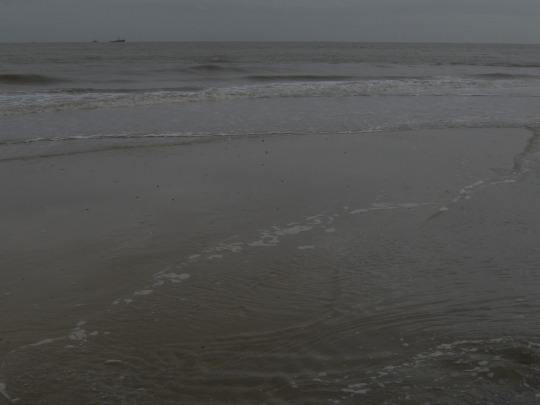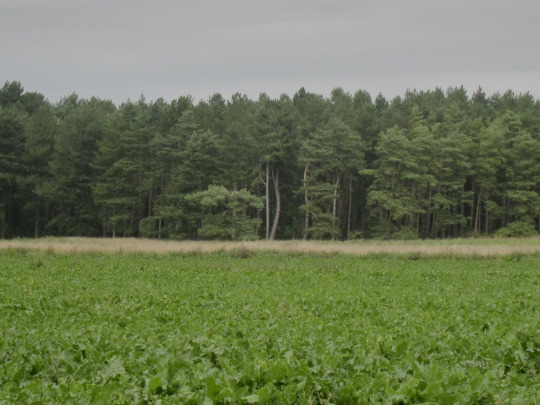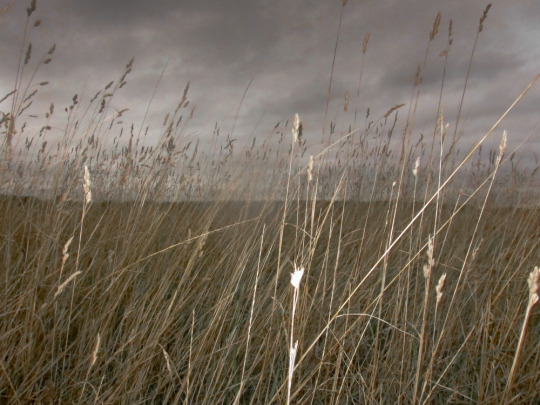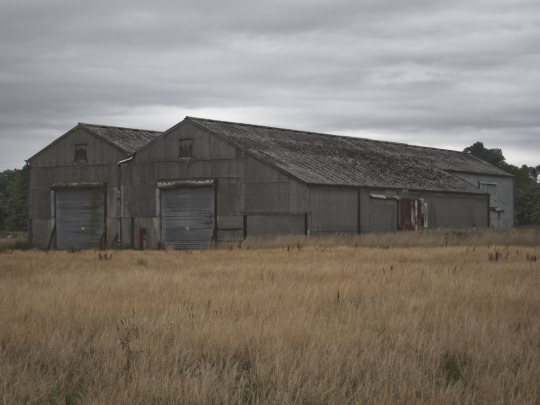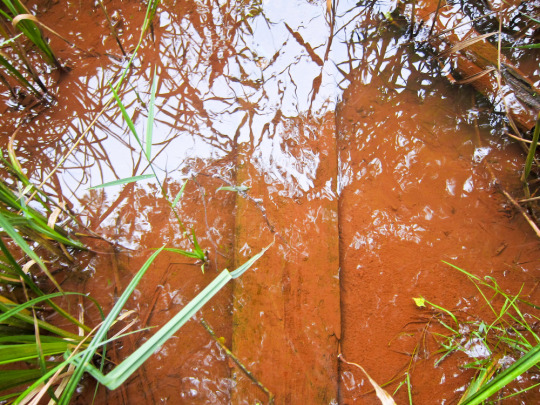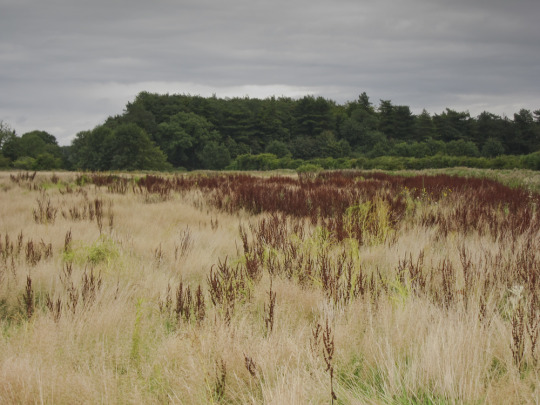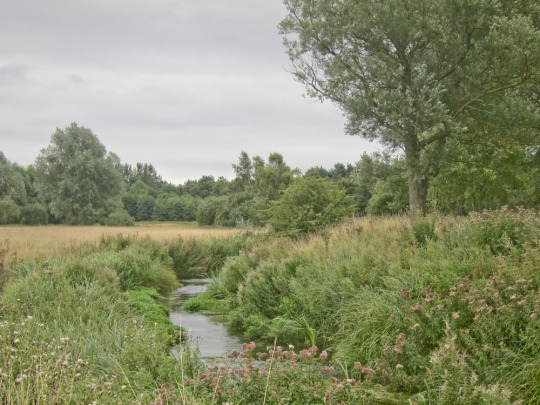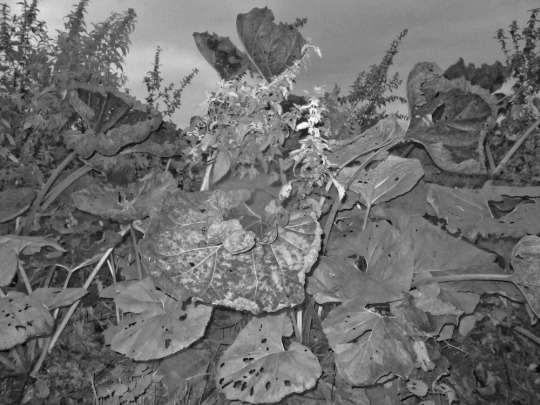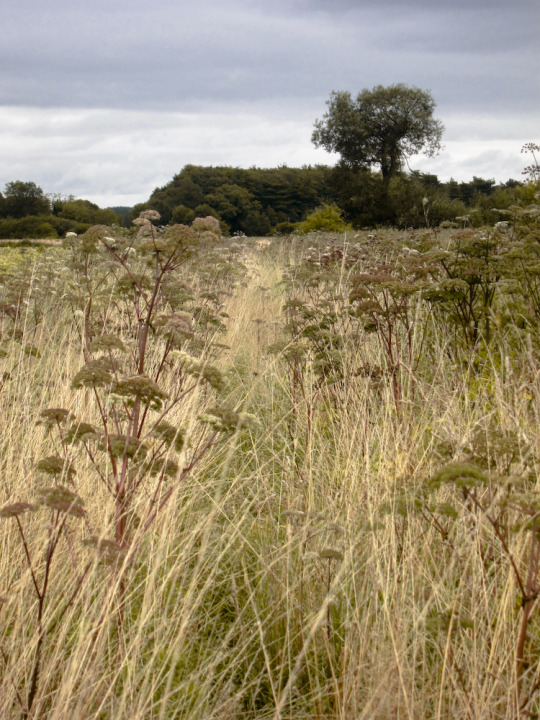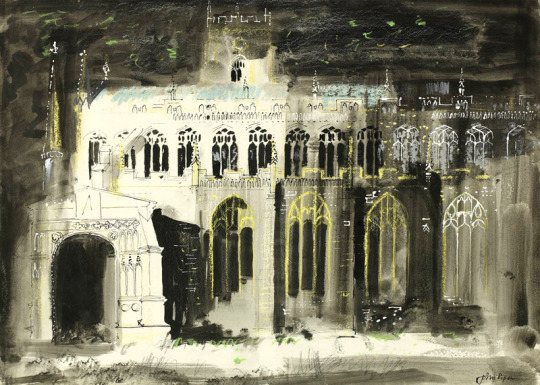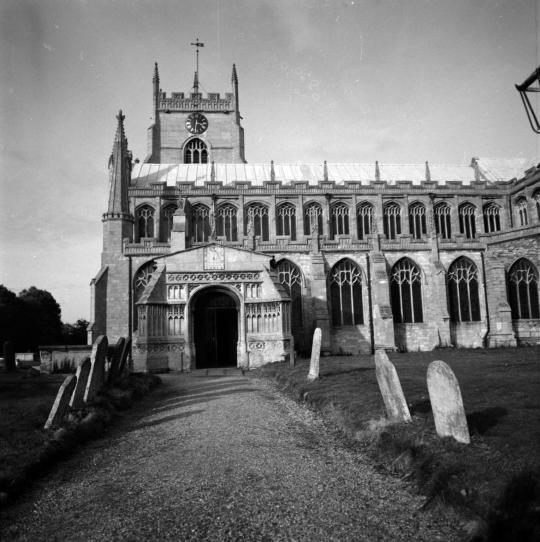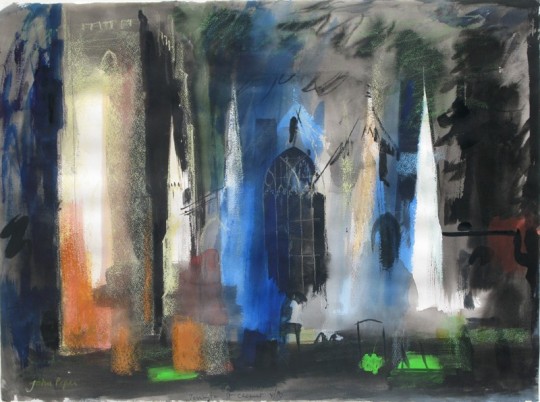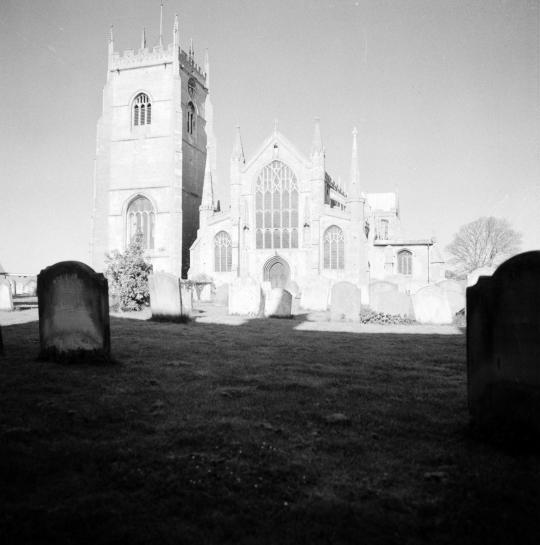There is nothing I have found that Bawden said in favour of Norfolk that would make this post become more interesting than me presenting some of his works to you. The works I have found showed that when he visited a place he painted it from various angles. I think all of these works were painted in the late 1960s as Bawden had an exhibition at The Fine Art Society in November of 1968 of paintings from Ireland, the Middle East and Norfolk.
The Church of St Michael The Archangel in Booton, about 10 miles drive from Aylsham is an architectural marvel that you don’t see in Britain. Designed in French Gothic style with pinnacles and two towers it might be a small set from Lord of the Rings.
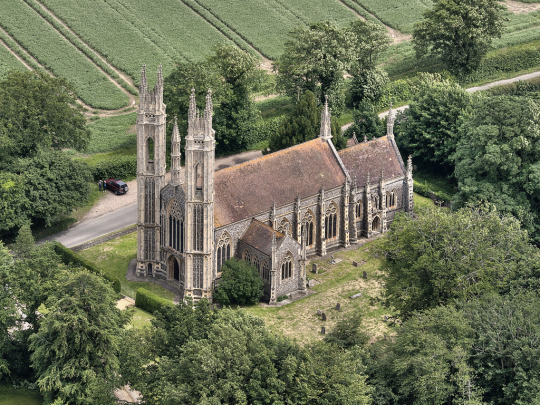
The Church of St. Michael The Archangel, Booton, Norfolk,
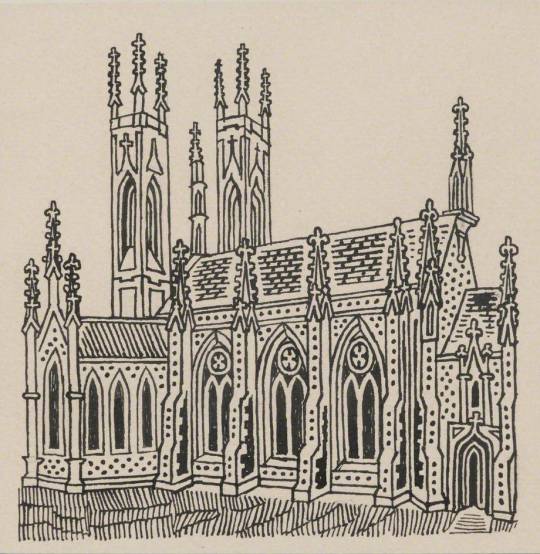
Edward Bawden – Design for The Church of St. Michael The Archangel, Booton, Norfolk, 1966
The painting below I rather like for its bold outline painting, but more for the shade of foliage to the left and white church stone in front, the church is painted in a gradient from white on the left, to black flints on the right.
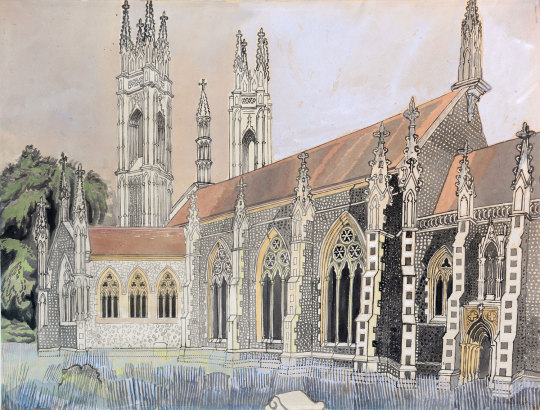
Edward Bawden – The Church of St. Michael The Archangel, Booton, Norfolk, 1966
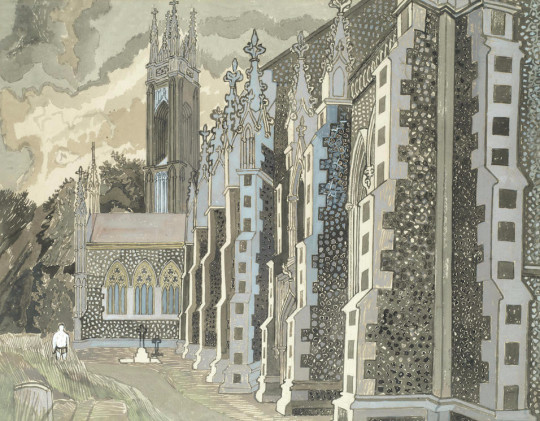
Edward Bawden – The Church of St. Michael The Archangel, Booton, Norfolk, 1966
Worstead Church is signed but looks more unfinished. It has the hints of a John Piper in the colour blotting and slight unfinished abstraction, though this may be because it mostly was unfinished.
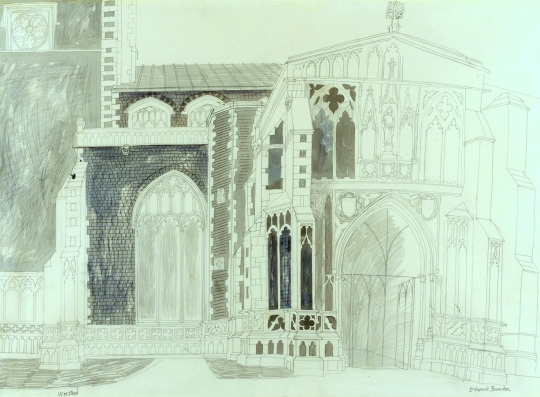
Edward Bawden – Worstead Church, 1966
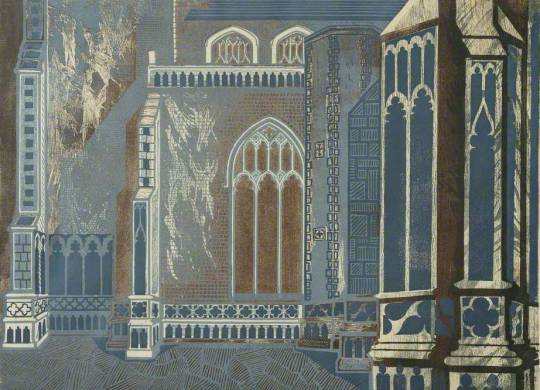
Edward Bawden – Worstead Church, 1966
Above a detail section of the Church that makes Bawden’s linocuts so wonderful; He takes a section out of scenes when making them into linocuts (on the Road To Thaxsted is a good example where he has cropped the picture with part of the Cottage roof but did not show the whole scene. If all the cottage was to appear it would look very twee). Bawden has also cut grooved grass, and a wild hacking of the lino made the distress on the building. Its printing in such a dark blue it looks like a negative image from film and to be a little provocative, I have inverted the image as a negative below.. I think it looks more pleasing, more like an Ed Kluz, though Edward wouldn’t thought much to my meddling!

after Edward Bawden – Worstead Church, 1966 (Inverted image)
The following images are Bawden as a good watercolour artist, using a wash on the grass and then a darker series of lines, the sky made up of geometric clouds and the trees inked out in pen and filled in with a broad green wash in a grey of the church and a green.
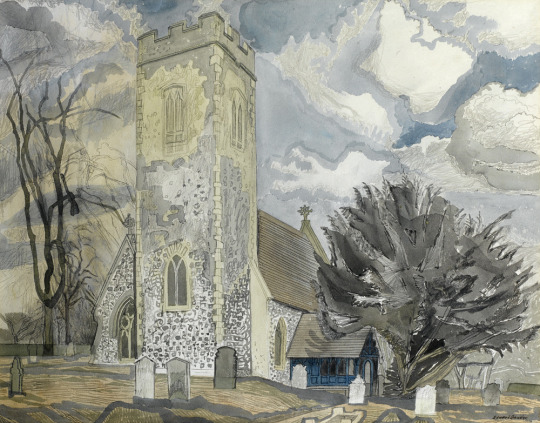
Edward Bawden – St Mary’s Church, Marlingford, Norfolk.
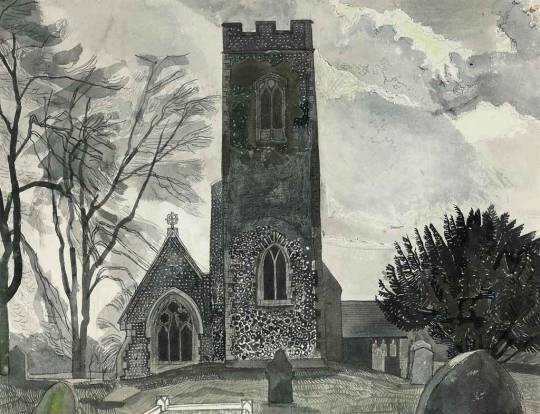
Edward Bawden – St Mary’s, Marlingford IV, 1968
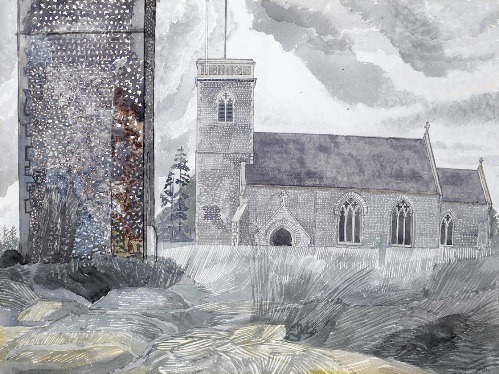
Edward Bawden – The Churches of All Saints and St Mary’s, Great Melton, Norfolk, 1968
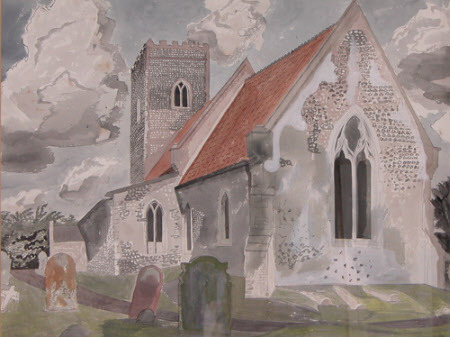
Edward Bawden – Little Melton Church, Norfolk, 1968
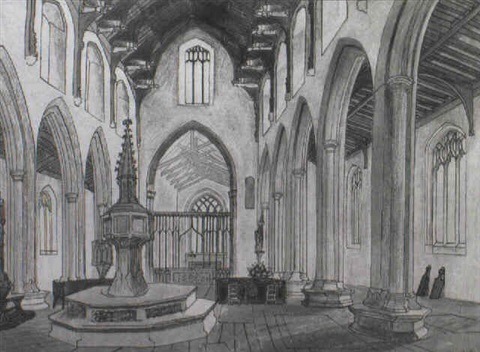
Edward Bawden – North Creake Abbey – Interior, Norfolk, 1967

Edward Bawden – Birnham Priory, Norfolk, 1968
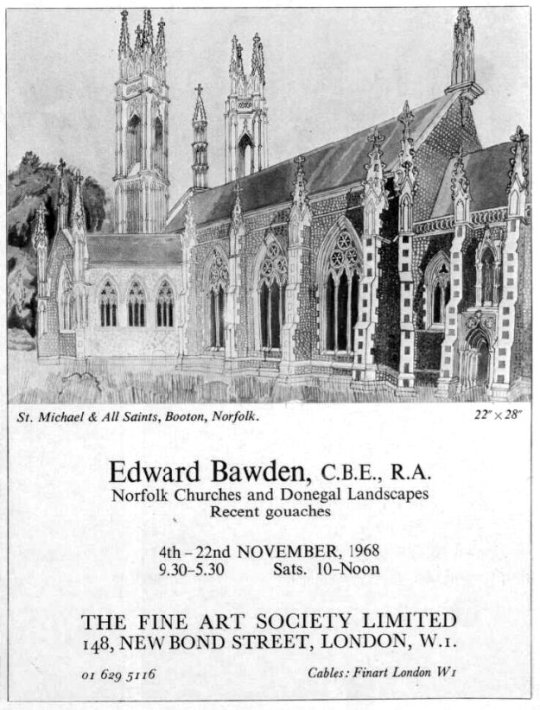
Original Advert for the Fine Art Society Exhibition.

